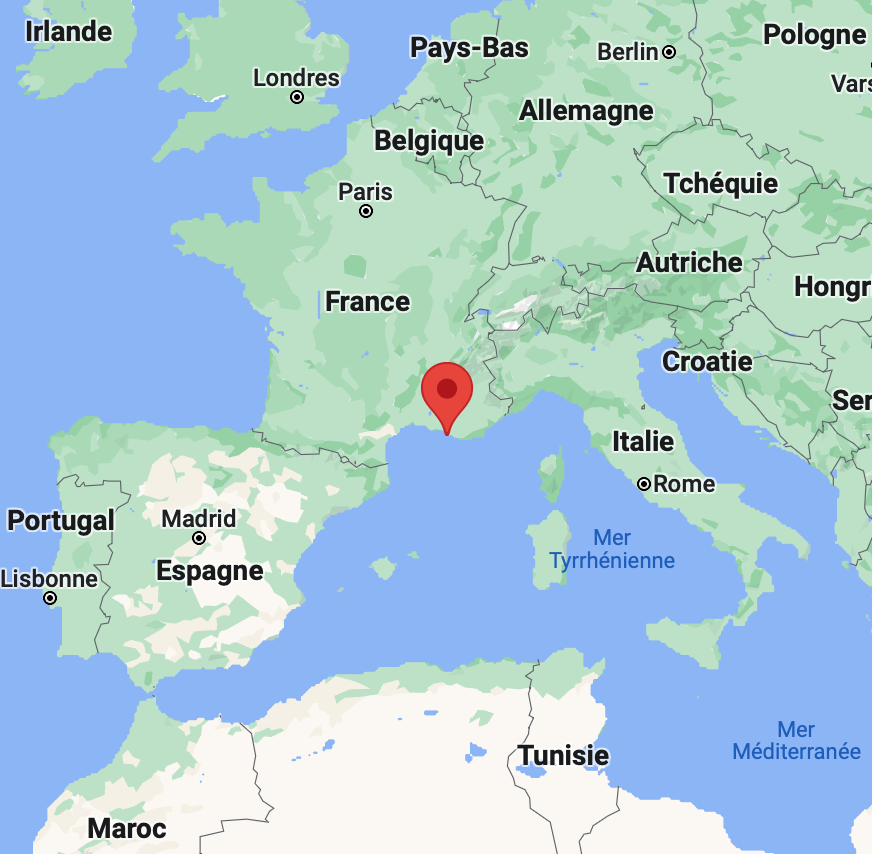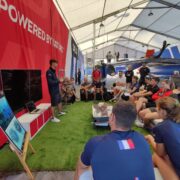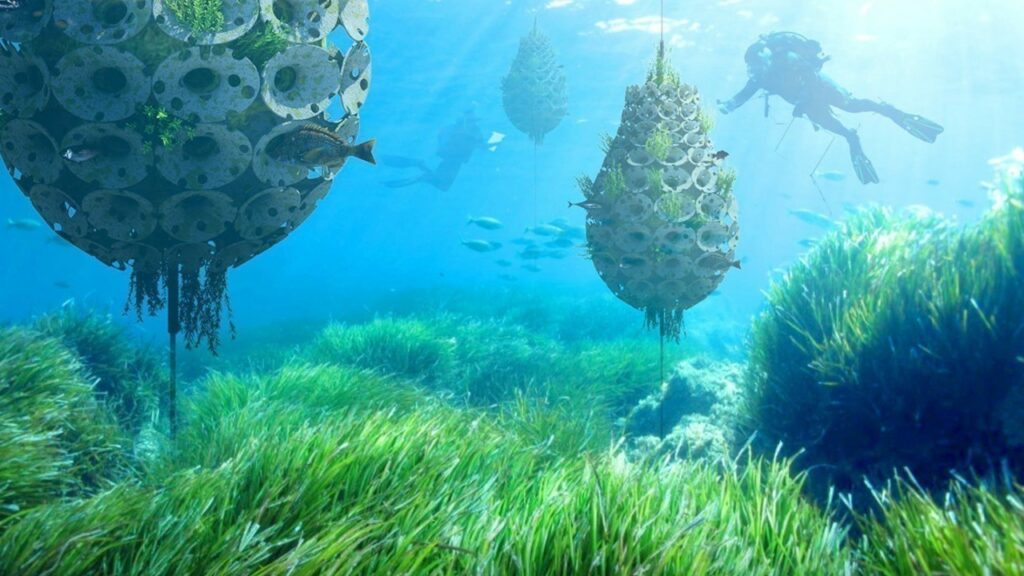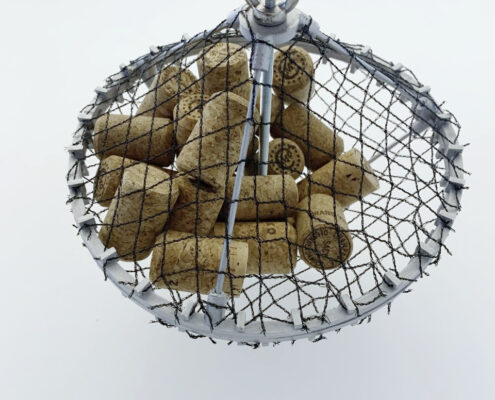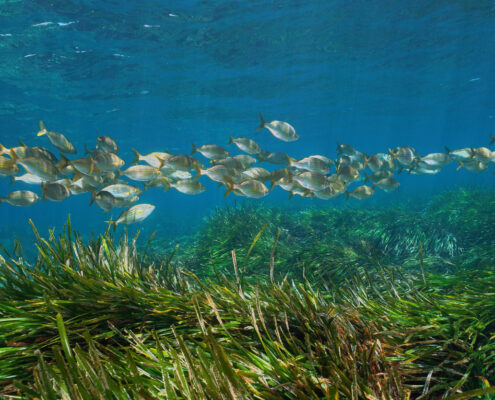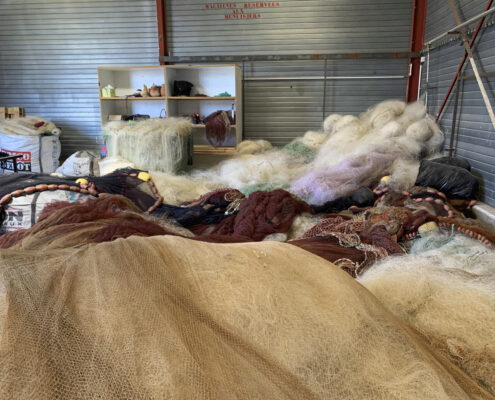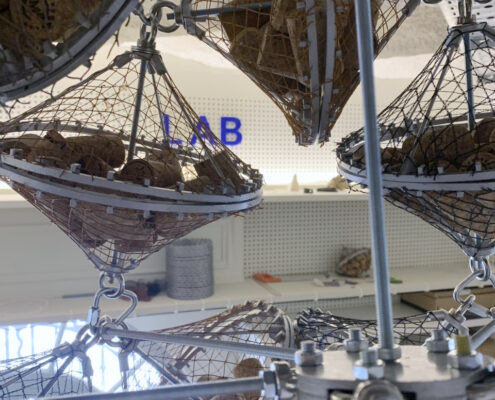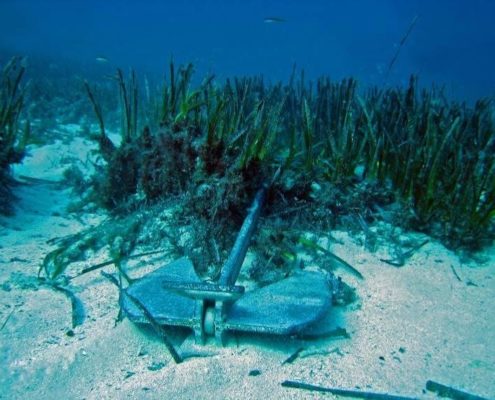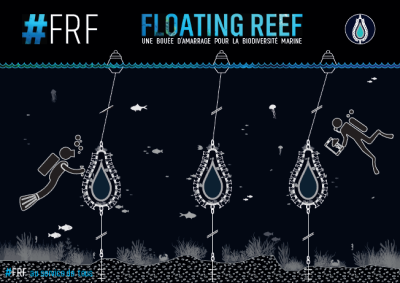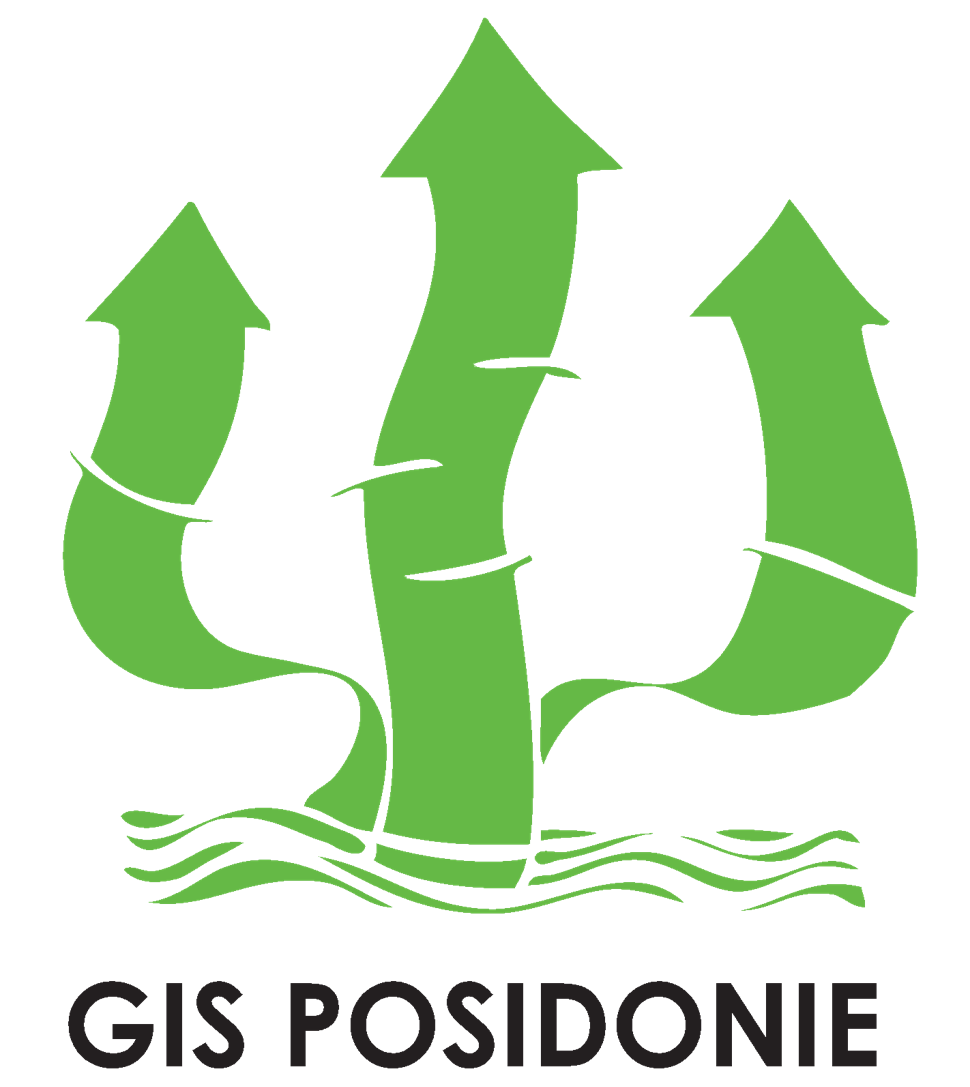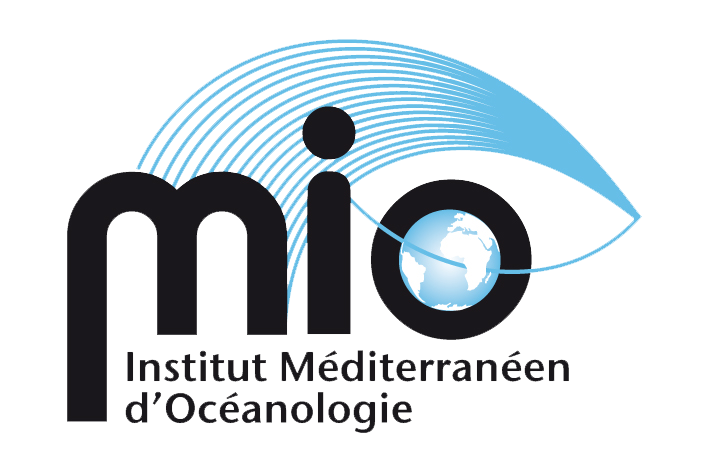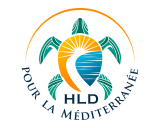Floating Reef
An ecological mooring buoy to keep posidonia meadows and biodiversity afloat
LOCALISATION
Marseille and the Frioul archipelago, France
The repeated anchoring of yachts impacts the seabed: in the Mediterranean, this practice contributes to the degradation of the precious Posidonia meadows. The Floating Reef project aims to develop an eco-designed and sustainable subsurface buoy. The multiple attachment surfaces of this biogenic buoy-reef, floating in the water column, will provide an ideal refuge for local plant and animal species. Combining 3D printed biopolymers and reused materials, this low carbon impact concept could be easily replicated worldwide.
The stakes of posidonia meadows conservation
In the Mediterranean, the sites most frequented by yachts are seeing an increasing degradation of the precious Posidonia meadows, under the influence of individual anchoring systems. The regrowth is very slow: the meadow extends horizontally only a few centimeters per year, and vertically one meter per … century. As a result, 10% of Posidonia meadows have already disappeared in recent decades.
However, these habitats are among the most productive on the planet, and of great biological diversity: although they represent less than 3% of the Mediterranean surface, 30 to 40% of species depend on them for all or part of their life cycle. They also provide a large number of ecosystem services: they support marine life, oxygenate water, fix sediments and large quantities of carbon in their root network (the “matte“), and protect the coasts from erosion by attenuating swell and forming “banks” on the beaches. Fishing resources, climate change mitigation, protection against extreme events, heritage, cultural and tourist value…: the economic value of the already-disappeared posidonia beds is estimated to ~4 billion euros per year.
The installation of permanent “ecological moorings” is an effective solution to avoid the use of individual anchors, but most of them come from the petrochemical industry and require regular maintenance to resist UV rays and fouling. The Floating Reef project aims to develop a more ecological and sustainable biomimetic mooring buoy: designed in biogenic material and 3D printed, its structure will serve as a refuge for various local species. No maintenance would then be required and each buoy could last for several decades. Eventually, several of these buoy-reefs floating above the seabed would be deployed in the same area to create an educational underwater pathway to raise public awareness of biodiversity preservation. This concept would be replicable all over the world. A scientific follow-up is also planned to measure the effectiveness of the buoys over the long term.
Phase I: the engineering developments
The artificial floating reef was initially designed in 3D printed concrete, thought to imitate the internal organization of Ascon sponges. This biogenic structure was to maximize the surface area colonized by marine life, while ensuring its viability (gas exchange, nutrient supply, etc.).
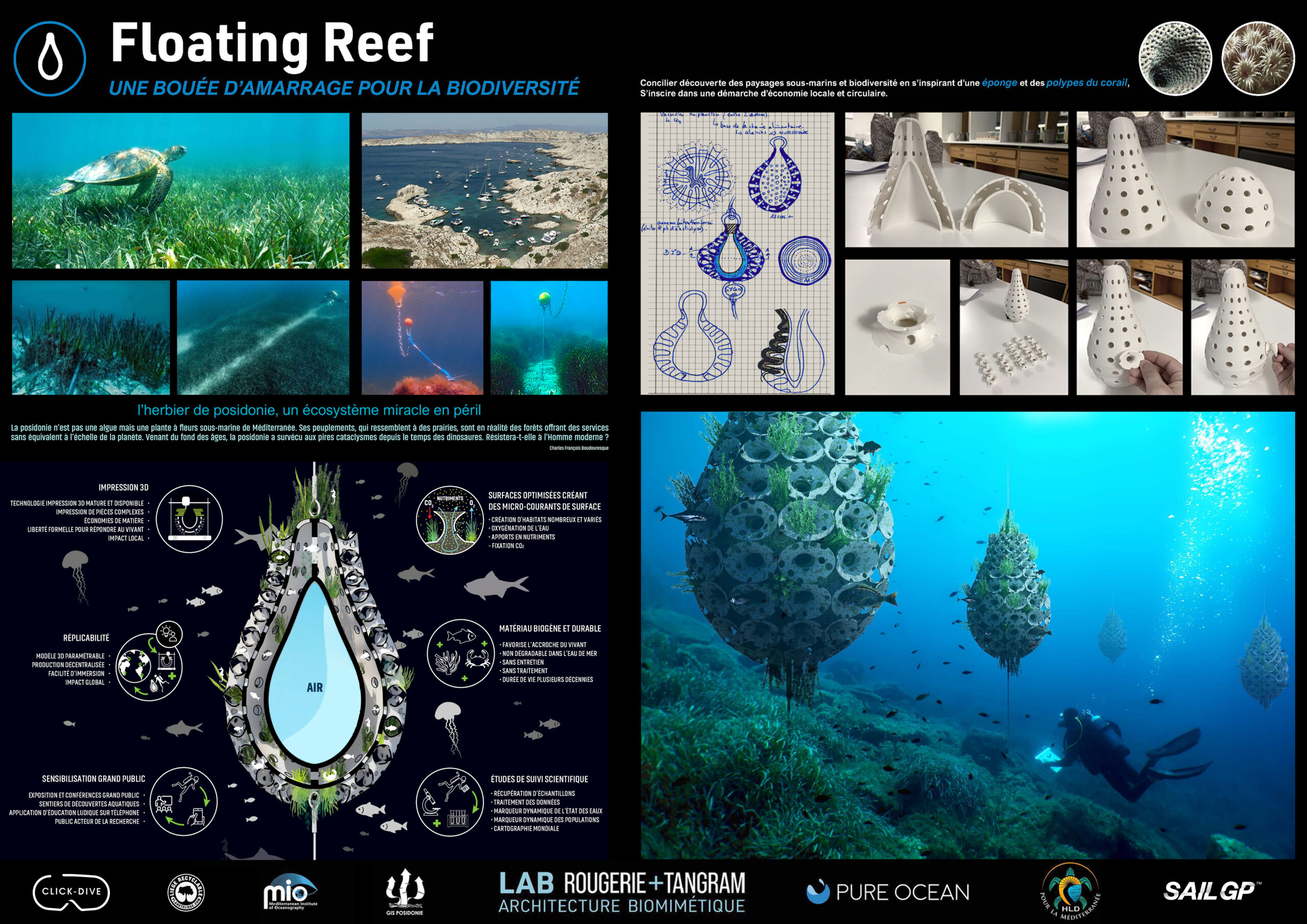
A second engineering phase led the architects to lighten and simplify the concrete structure for a metal frame sphere. The buoyancy of the structure is ensured by corks contained in an assembly of nets from reused local fisheries waste. Modules inspired by Mediterranean coral polyps allow gas and nutrient exchanges with the surrounding habitat, providing hiding places and shelters for small invertebrates and fish juveniles.
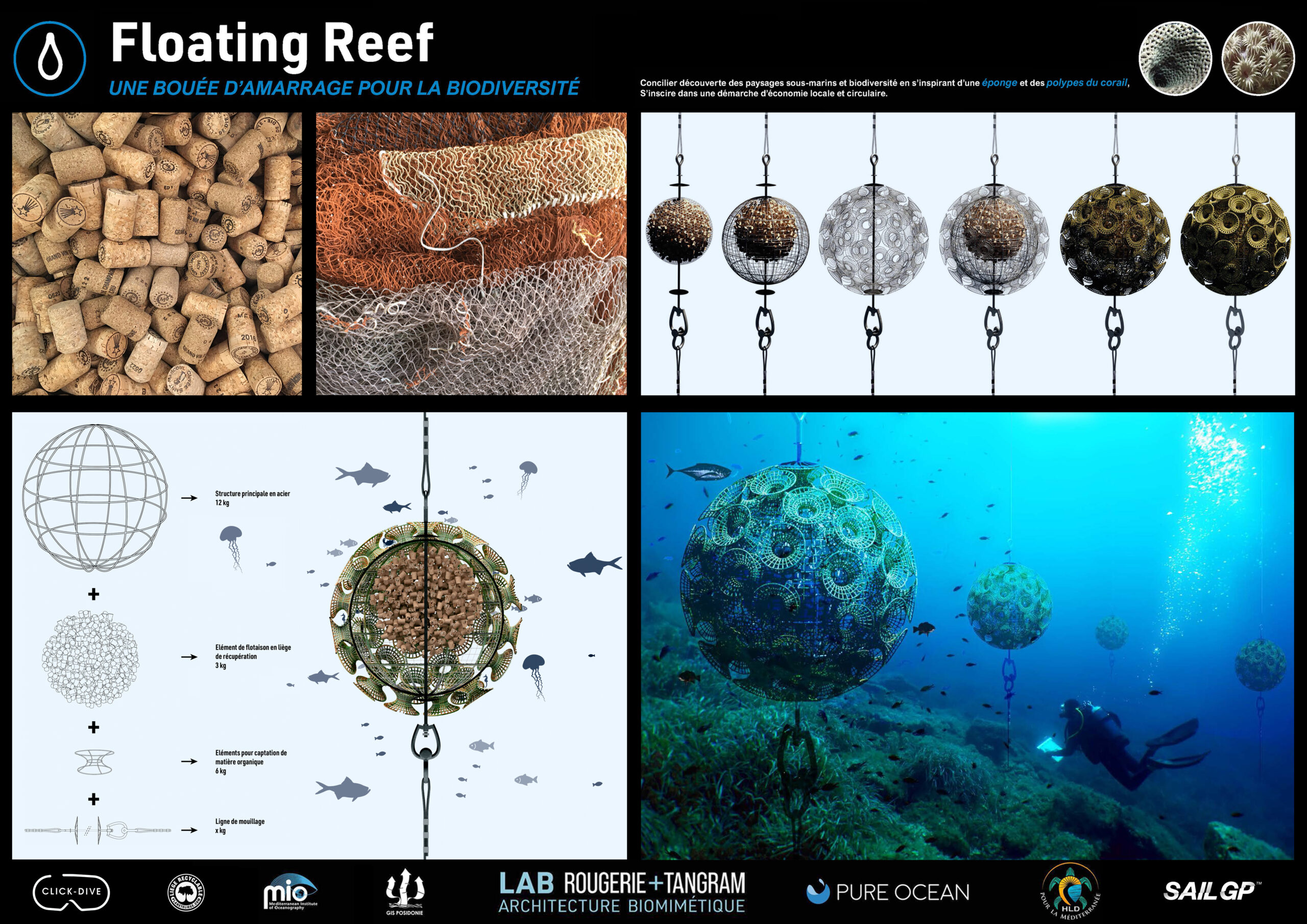
The final developments further lighten the Floating Reef by replacing the metal structures with 3D printed biopolymer modules. The corks are now housed in multiple modules, with an assembly system that solidifies the entire structure while allowing water to flow through the reef.
The sustainable structure, employing locally-sourced reused materials, offers an optimized space for marine life to thrive.
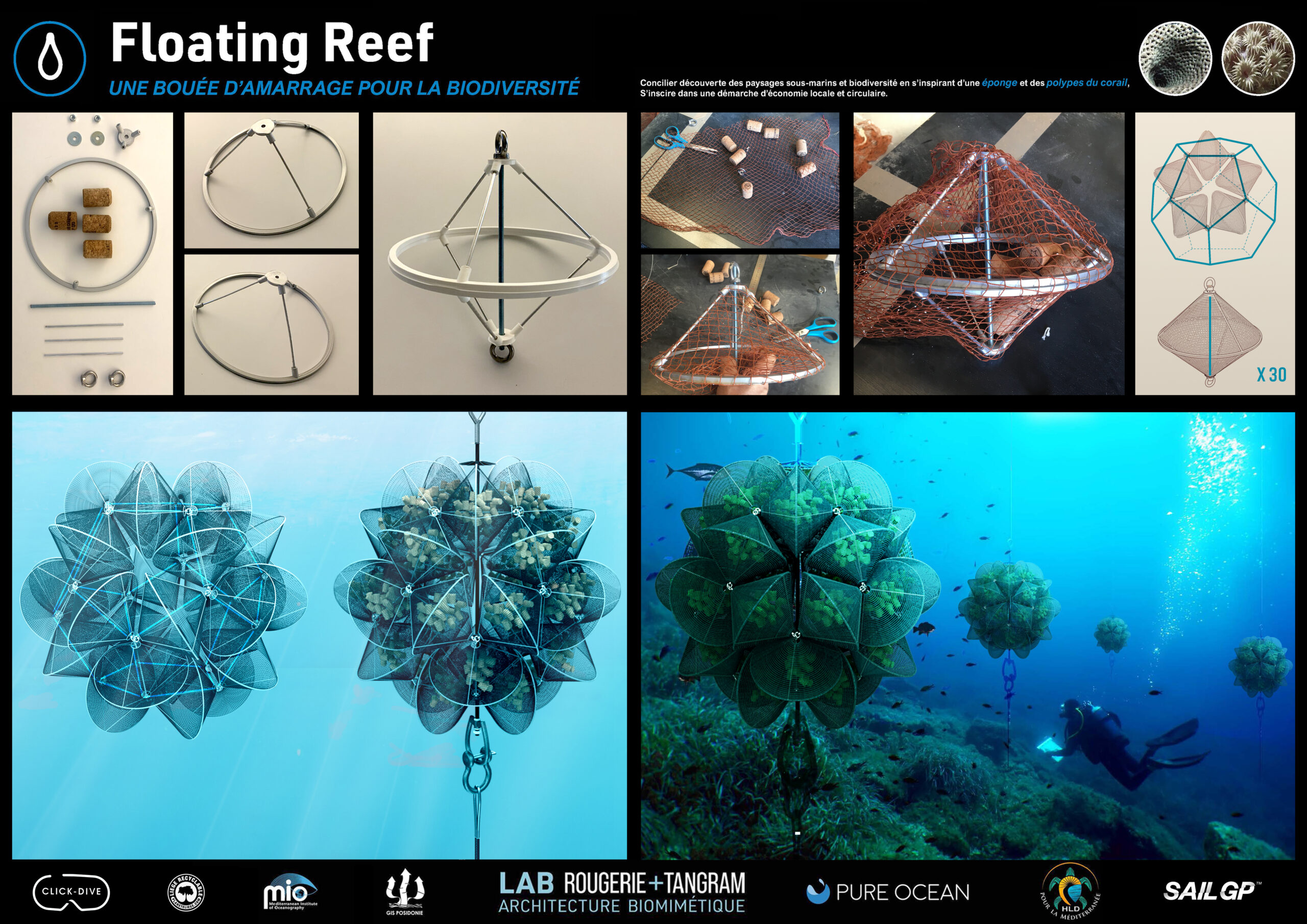
PROJECT GOAL
Design a subsurface mooring buoy to preserve posidonia meadows and restore local biodiversity.
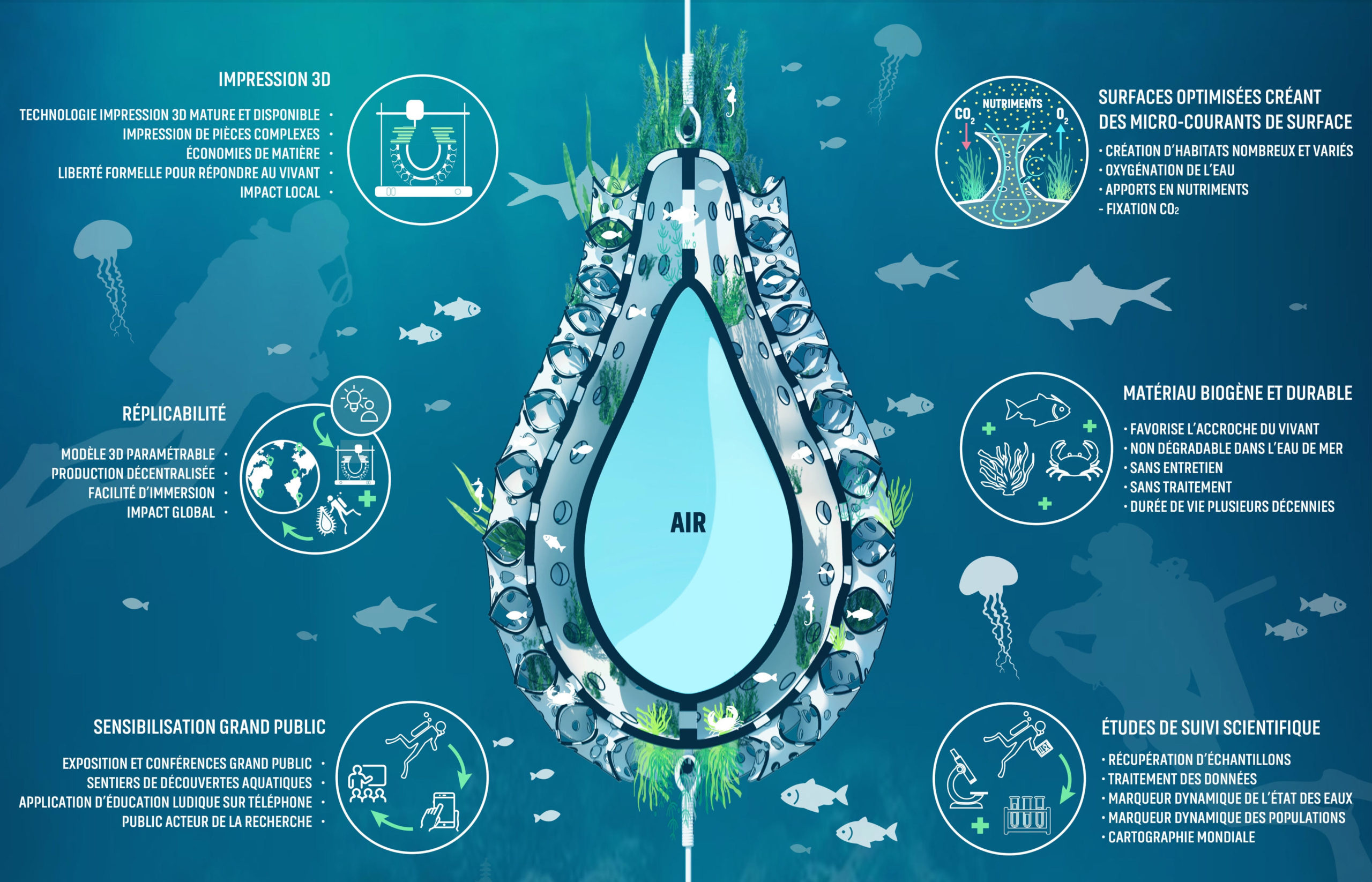
PROJECT UPDATE
Phase II: study of the deployment of experimental buoys in the Mediterranean (2023)
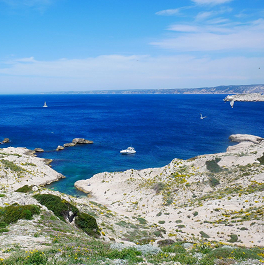
The first Floating Reef prototype is unveiled in September 2022 in St-Tropez, in front of the international crews of the Sail GP (partner event of the project) and local maritime actors.
The experimental buoys on a 1:1 scale are being built during the winter of 2022-23, for a planned immersion during 2023. Several sites are being studied to receive these first iterations.
A first major site has been identified on the islands of the Frioul archipelago in Marseille, in the area of the Calanques National Park. Several locations are being studied, following a variety of pressures related to fishing and boating activities, while ensuring their accessibility to the public.
Consultations are currently being held with the maritime authorities to validate the realization of the project on the public domain.
The installation of test models in proprietary sites or private concessions on the rest of the coastline is also being considered, with the objective of maximizing the diversity of physical (mechanical constraints related to waves, currents, etc.) and biological (living communities and habitat types) environments around the experimental buoys.
Phase III: monitoring the return of biodiversity around the reef (2023-2025)
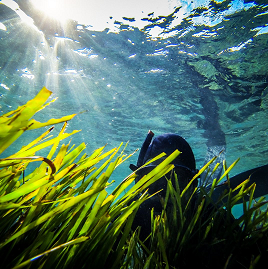
The scientific monitoring of the dynamics of colonization of the reef buoy and the repopulation of the surrounding meadow will be able to start when the first iterations are launched.
It will first allow an experimental validation of the materials used: what resistance to the environmental conditions? What affinity of marine organisms for these substrates?
In addition, beyond a new submerged surface, the reef constitutes a new type of habitat. The floating reef buoy is isolated from the bottom (and the organisms that reside there), and is specifically accessible to species living in open water (algae, planktonic larvae, juvenile and adult fish, etc.).
The monitoring program of these new biological communities will be established over several years, will be marked by the sharing of data and results between all stakeholders, and the publication of the project’s conclusions on a large scale.
CALL FOR PARTNERS TO EXPAND THE EXPERIMENT
We want to expand the impact of the project!
The following developments are open to new partners for funding:
EXPERIMENTATION
Immersion of an experimental reef buoy in a location
An experimental day on site immersion with scientists
INNOVATION
R&D and technical engineering for the V3 reef buoy (continuous improvement)
Manufacturing of the V3 reef buoy prototypes
AWARENESS – EDUCATION
Creation of an educational underwater trail
Design and installation of an exhibition in the partner’s premises
Contact Thomas +33 6 47 86 08 01 or Gwen +33 6 15 32 06 65
PROJECT LEADERS
 Olivier Bocquet, research and sustainable innovation architect at Rougerie + Tangram, director of Tangram Lab, Marseille, France.
Olivier Bocquet, research and sustainable innovation architect at Rougerie + Tangram, director of Tangram Lab, Marseille, France.
 Théo Jarrand, architect, in charge of the Lab study at Rougerie + Tangram, Marseille, France.
Théo Jarrand, architect, in charge of the Lab study at Rougerie + Tangram, Marseille, France.
 Dr. Laurence Le Direach, in charge of research and administration of GIS Posidonie, Mediterranean Institute of Oceanology, Marseille, France.
Dr. Laurence Le Direach, in charge of research and administration of GIS Posidonie, Mediterranean Institute of Oceanology, Marseille, France.
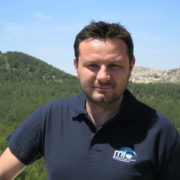 Dr. Thierry Thibaut, phycologist and ecologist, teacher-researcher at the Mediterranean Institute of Oceanology, Marseille, France.
Dr. Thierry Thibaut, phycologist and ecologist, teacher-researcher at the Mediterranean Institute of Oceanology, Marseille, France.

